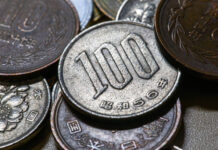Market movers today
Today, we get the Michigan consumer confidence survey in the US, which includes an inflation expectations component which the Fed is paying attention to. Year-ahead inflation expectations spiked to 4.6% in April but declined to 4.2% in May.
Fed Board Member Christopher Waller speaks in Oslo 13.45 on “financial stability and macroeconomic policy”.
Final euro area inflation data for May is unlikely to be significantly different from the preliminary version, but will add more details.
The 60 second overview
ECB: The ECB meeting yesterday was according to expectations with its 25bp rate hike and a formal decision to end the APP reinvestments from July. The staff projections were revised higher for both underlying and headline inflation across the horizon with importantly the 2025 projection at 2.2%, above the ECB’s target. Lagarde said that it’s ‘very likely’ to hike again in July. Lagarde did not provide guidance for the rate path beyond that but reconfirmed the mantra of a known destination, but unknown journey. We continue to expect ECB to hike to 4% by September, and we reiterate our view that the burden of proof will reverse after July when we get two new inflation prints and new staff projections ahead of a September meeting, see more in Flash: ECB Review – ‘Very likely’ to hike again in July, 16 June.
Danmarks Nationalbank: Danmarks Nationalbank (DN) also announced a raise in its key policy rate 25bp to 3.10% and hence mirroring the ECB rate hike. DN thereby keeps the spread to ECB’s policy rate unchanged at -40bp. EUR/DKK has traded towards the mid-point of the historical trading range in recent months with no need for DN to make interventions in the FX market. We expect this situation to prevail over the coming months and for DN to track future interest increases from ECB 1:1. Hence, we look for DN to hike 25bp again in July and September, which would bring its key policy rate to 3.60%.
Bank of Japan: Bank of Japan (BoJ) kept its yield curve control policy unchanged this morning as widely expected. The yen weakened further on the decision, with USD/JPY trading up around 140.7 levels. The BoJ continues to expect inflation to slow later this year. They pledge to “patiently continue with monetary easing while nimbly responding to developments in economic activity and prices as well as financial conditions”. Markets will now turn focus to the press conference, not least for clues on what BoJ makes of the recent yen decline and what that means for inflation.
The economic recovery in Japan has been picking up speed recently, adding to the likelihood of a tightening move from the BoJ. May wage figures in three weeks will be key to watch ahead of the next BoJ meeting at the end of next month, in order to gauge broad wage pressures. We expect an increase in the tolerance band around the 0% 10-year yield target at that meeting or the one in September.
Energy prices. The European natural gas price has risen around 50% since the start of the month to around EUR40/Mwh – the highest level since the beginning of April. The price increase likely owes to a multitude of factors include weather-related drop in renewable power production, higher energy demand due to the dry and warm weather, the decision to close the Groningen gas field already this year, very low nuclear power production in France and finally, increased geopolitical risk to natural gas production in Europe following recent comments from Russia. Regardless of the reason, it serves as a reminder that the European energy situation is fragile and sensitive to many different factors that are hard to predict – most notably the weather. We do not think there is a big risk of sharp price increases. In particular, because European natural gas storages are 20% larger now compared to last year. Nevertheless, the increase in natural gas prices has spill-over to European power prices and coal prices.
Equities: Global equities higher again yesterday but with massive differences underneath. ECB’s hawkish 25 bp hike, led yields massively higher with a stronger Euro. European equites were already lower going into the meeting but fell immediately after before recovering somewhat up to the close. Still at defensive rotation in Europe. In US it was a very different story where equities gained steadily during the session and closing around day high. S&P moved firmly above the 4400 level and on rack for a fifth straight week of gains, something that has not happened since November 2021. In US yesterday, Dow +1.3%, S&P 500 +1.2%, Nasdaq +1.2%, Russell 2000 +0.8%. Asian market grinding higher this morning while futures in Europe and US are more mixed.
FI: Yesterday’s trading session was rather volatile as initially the FOMC’s hawkish communication from Wednesday night took yields higher. The ECB meeting which saw an upward revision of the inflation projections across the forecast horizon initially sent rates higher as guidance for further tightening needed was given. The 10y point sold off by 5bp across most jurisdictions. The front-end led sell-off took the ECB policy peak rate 5bp higher to 3.91%, with markets bringing the September meeting into play. Bank of Japan kept its yield curve control policy unchanged this morning as widely expected.
FX: The last 24 hours in FX markets have been characterised by not least JPY weakness – on higher global yields and this morning’s Bank of Japan ‘unchanged’ announcement – alongside the EUR gaining on a fairly hawkish ECB message yesterday. EUR/USD is back above the 1.09 level, while EUR/SEK and EUR/NOK trades around 11.60 and 11.50, respectively. EUR/GBP continues to trade around year-lows.
Credit: Credit markets continued to digest the implications of the Fed meeting as well as the rate hike from the ECB. This left credit markets with slow trading in secondary markets and relatively limited new issue supply. Overall, iTraxx Main was unchanged at 77bp while iTraxx Xover was 1bp wider at 405bp.













